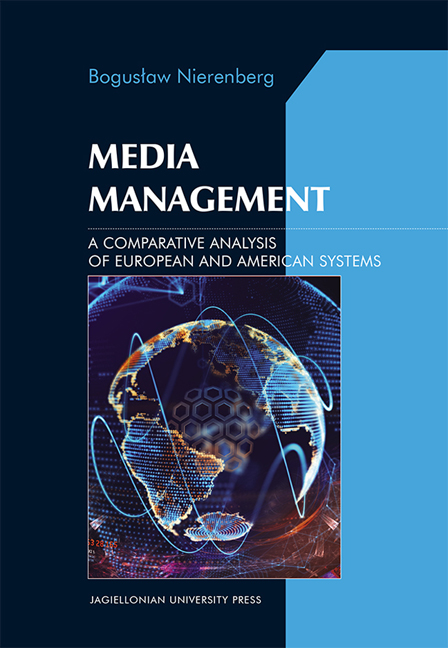Chapter 6 - Management of Advertising
from Part 2
Published online by Cambridge University Press: 10 January 2018
Summary
Advertising is one on the most essential elements of the media market. For commercial media, it is the most significant, as advertising revenues constitute the basis of many organizations’ upkeep. They have become an essential agent between producers or service providers and their consumers. The contemporary media landscape does not exist without commercials. Therefore, the ability to manage advertisements is one of the crucial elements of general media management.
Similar to any other innovation, media organizations that enter the market are characterized by a course of diffusion. In the initial course period only a few people make use of a given medium. Yet, as it becomes widespread, it enters a period of profitability to become a mass medium in its third stage. This diffusion period then undergoes a continuous shortening. Let us make use of figures from the United States as an example. The first nation-wide newspaper was published in 1672 and needed 160 years in order to become a mass medium. For magazines it took 110 years, for radio it took 30, and for television it only took 10 years.
John M. Lavine, Daniel B. Wackman [1988: 22–24] accentuate three major reasons for an accelerated diffusion:
Curtailment of working hours resulting in the extension of time-off which in turn led to an increase in media consumption, especially when electronic media became widespread
Electronic media required more minor skills from viewers than printed media, e.g. the ability to read (J. M. Lavine, D. B. Wackman point out that the diffusing of media connected with computers was slower than that of television)
Technological changes in media accelerate the diffusion process.
Such a multitude of competitive media is highly importance for media management. It means that it is essential to use every competitive advantage in order to defeat competitors and acquire new consumers. Secondly, rapid changes taking place inside the media should make managers focus primarily on the management of changes in the realms of technology, employees and media consumers. The aforementioned authors emphasize that the last 50 years of the 20th century stood for stable expenditures on media consumption.
- Type
- Chapter
- Information
- Media ManagementA Comparative Analysis of European and American Systems, pp. 105 - 122Publisher: Jagiellonian University PressPrint publication year: 2016

